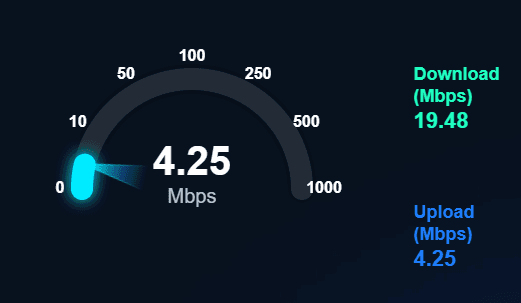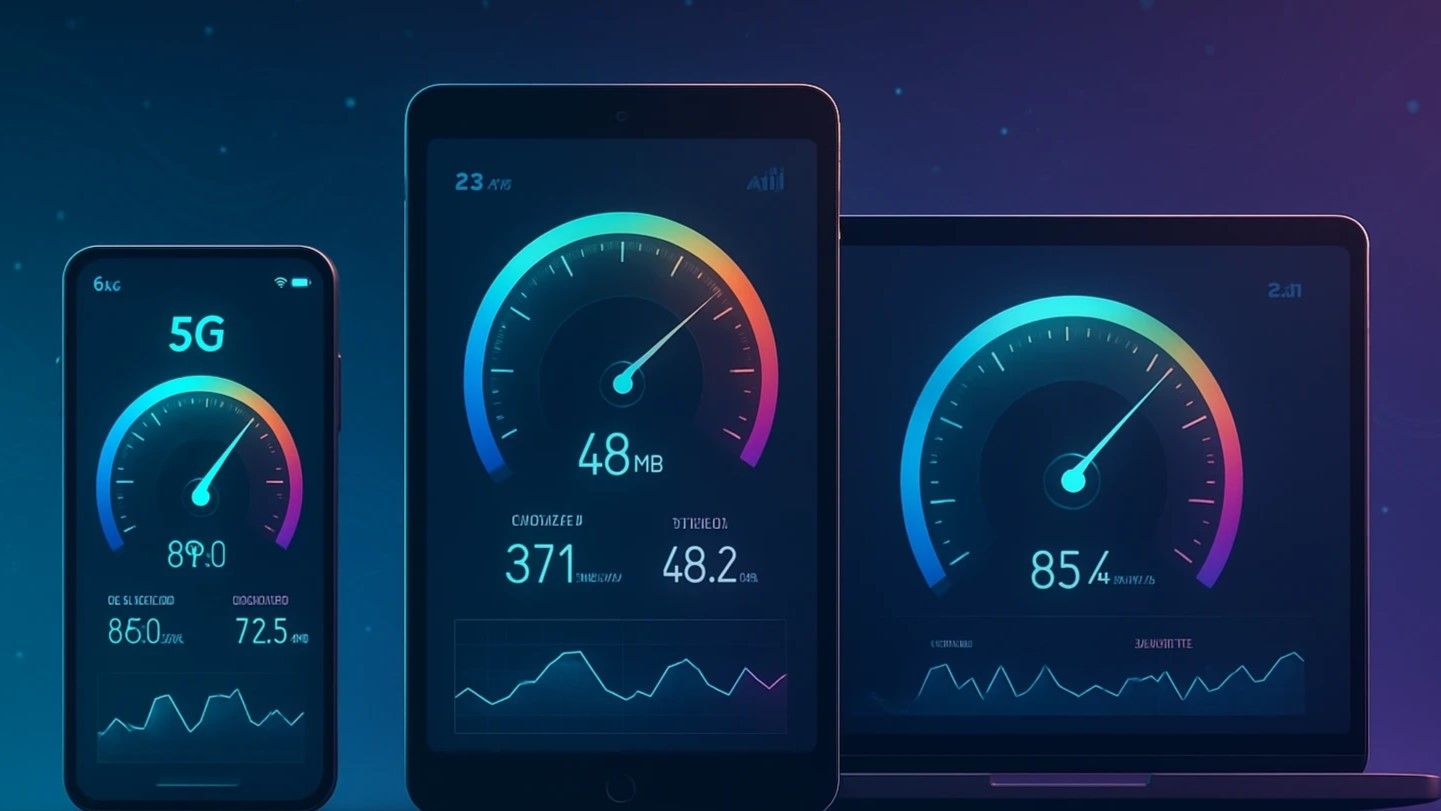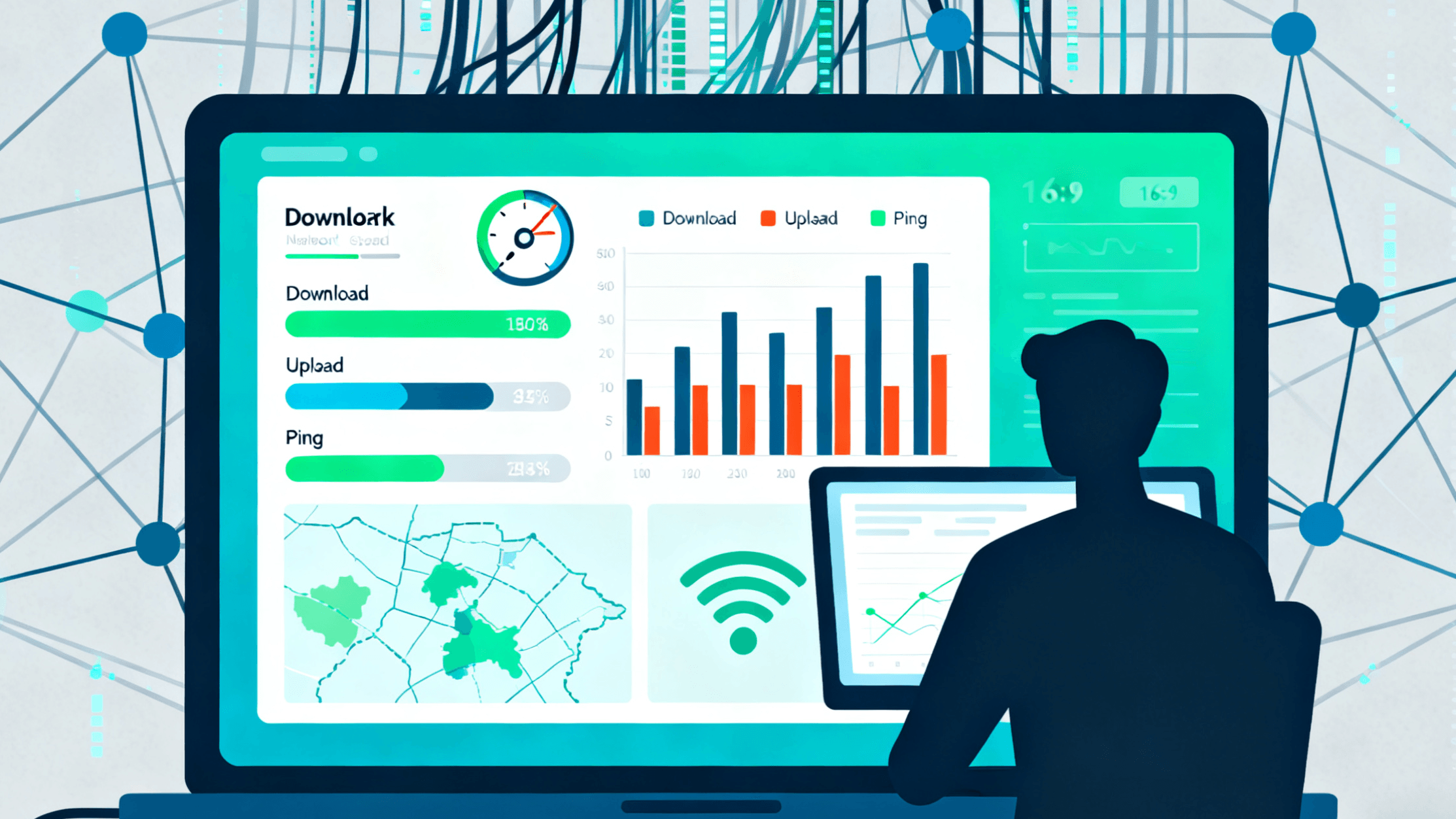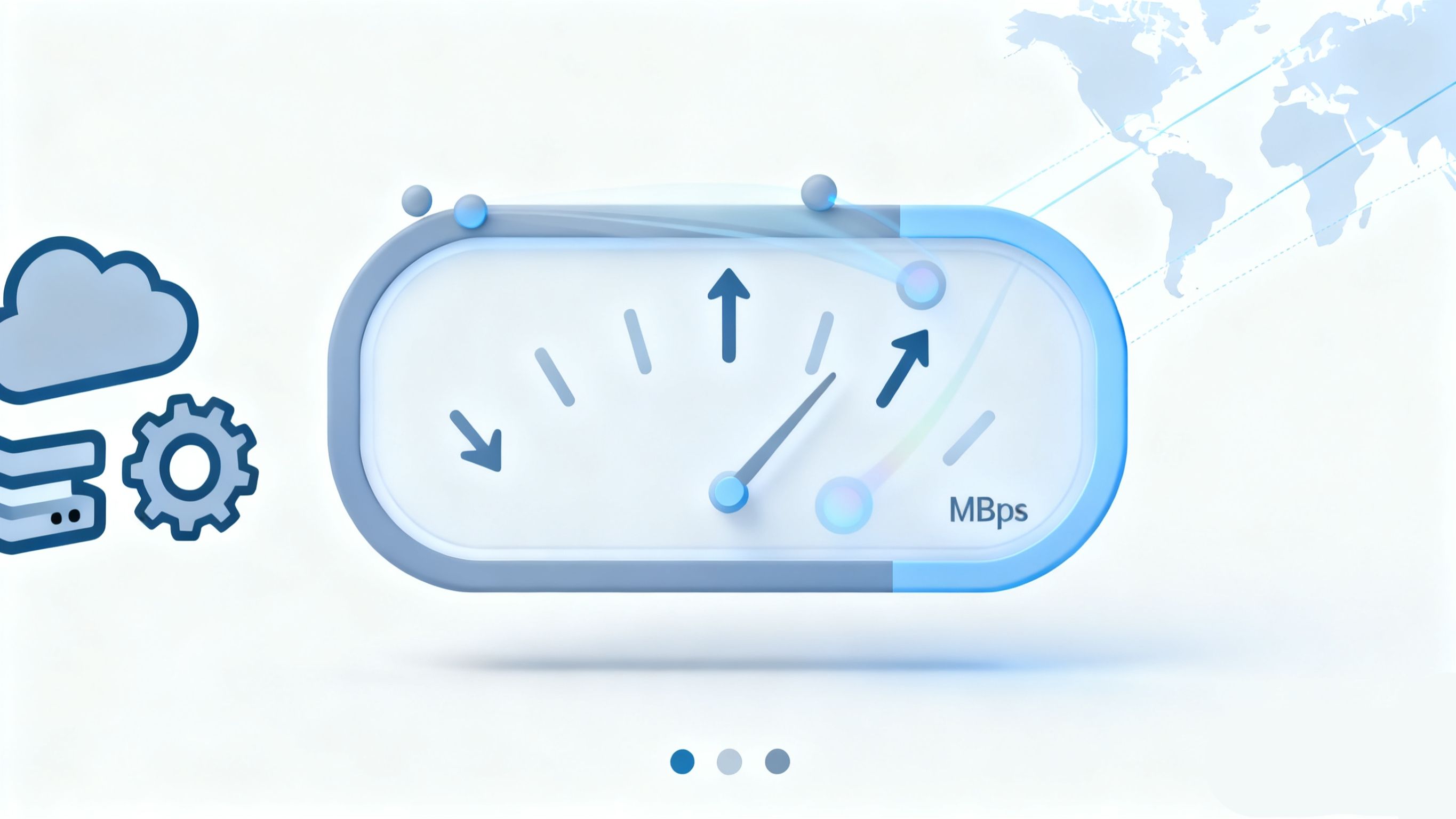What Does Mbps Mean? What’s the Difference Between Download and Upload Speed?
When using the internet, we often hear terms like “100 Mbps broadband,” “200M bandwidth,” or “10 Mbps internet speed,” but many people don’t really understand what these numbers mean.
What does Mbps actually stand for? What’s the difference between download speed and upload speed? And why, even with a “100 Mbps broadband” connection, do file downloads sometimes max out at less than 13 MB/s?
This article will help you understand the principles behind internet speed units and show you how to use the ToDetect Online Network Speed Test Tool to check and evaluate your network performance.

1. What Is Mbps? Understanding Internet Speed Units
The most common unit used in network speed tests is Mbps, which stands for Megabits per second. It indicates how many megabits of data can be transmitted every second.
For example, if your broadband is 100 Mbps, theoretically, it can transfer 100 megabits of data per second.
However, there’s a point that often confuses users: the “bit” in speed tests is different from the “Byte” used in computers.
1 Byte = 8 bits
This means that the actual file download speed should be calculated as:
100 Mbps ÷ 8 = 12.5 MB/s
So, when you see a download speed of around 12 MB/s in your browser or download software, it means your 100 Mbps broadband is performing as expected.
2. The Difference Between Download Speed and Upload Speed
On any network speed test page, you’ll notice two key metrics: download speed and upload speed. These metrics represent opposite directions of data transfer and have different meanings.
(1) Download Speed: The Ability to Receive Data
When you open a webpage, watch a video, or download files, you are essentially downloading data.
The faster your download speed, the quicker webpages load and the smoother videos play. Low download speeds can cause buffering, lag, and slow loading times.
(2) Upload Speed: The Ability to Send Data
Upload speed measures how fast data is sent from your device to the internet. Common scenarios include:
- Uploading files to cloud storage
- Video conferencing and remote work
- Live streaming and content publishing
- Syncing files to cloud backups
Higher upload speeds ensure more stable file transfers and smoother video or live streaming performance.
Most home broadband connections use asymmetric bandwidth—high download speed but lower upload speed—because most users mainly download data rather than upload.
If you frequently livestream, join video meetings, or transfer large files, consider a plan with higher upload bandwidth to improve network stability.
3. Factors Affecting Speed Test Results
Many users notice that testing the same broadband at different times yields different results. This happens because speed test results are influenced by multiple factors—not just the bandwidth.
(1) Network Congestion
During peak hours (e.g., after 8 PM), many users access the internet simultaneously, consuming available bandwidth. This naturally lowers speed test results.
(2) Router Performance
Older or entry-level routers may not support high-speed data transfer, leading to lower test results. It’s recommended to use a gigabit router and keep the firmware updated regularly.
(3) Connection Type
A wired connection (Ethernet) is more stable and accurate than a wireless connection (Wi-Fi). Wi-Fi signal strength, walls, and interference can all affect test results.
(4) Distance to the Test Server
The farther the server, the higher the Ping (latency), which can slightly reduce measured speeds. ToDetect Online Network Speed Test automatically selects the nearest server to ensure accurate results.
4. How to Understand Your Internet Speed Using an Online Test Tool
With ToDetect Online Network Speed Test, you can check your network performance with just one click:
- Download Speed: Measures how fast your network can receive data.
- Upload Speed: Measures how fast your network can send data.
- Ping: Reflects your network’s response time.
- Jitter: Indicates fluctuations in latency.
Together, these metrics provide a complete picture of your network’s health.
For example:
- High download speed but high latency may indicate a long route or network congestion.
- Low upload speed could mean insufficient upstream bandwidth.
- High jitter signals an unstable connection.
Using ToDetect’s speed test report, you can not only see whether your internet speed meets expectations, but also analyze the root cause of any issues and optimize your network more effectively.
5. What Counts as Normal Speed Test Results?
Different online activities have different network requirements. Refer to the following guidelines:
| Use Case | Recommended Download Speed | Recommended Upload Speed | Ideal Ping |
|---|---|---|---|
| General Browsing / Video Streaming | ≥10 Mbps | ≥2 Mbps | <100 ms |
| HD Video Conferencing | ≥25 Mbps | ≥10 Mbps | <50 ms |
| Live Streaming / File Upload | ≥50 Mbps | ≥20 Mbps | <50 ms |
| Online Work / Cloud Sync | ≥100 Mbps | ≥30 Mbps | <30 ms |
If your speed test results are significantly below these values, you can try:
- Restarting your route
- Closing background download programs
- Changing the test server or testing at a different time
- Checking for old or damaged cables
6. Understanding Speed Test Results to Optimize Your Broadband
Speed testing isn’t just about achieving the highest numbers—it’s about understanding your network’s performance.
By understanding Mbps, download speed, and upload speed, you can clearly determine whether your network meets standards and pinpoint potential issues.
With ToDetect Online Network Speed Test, you can:
- Test download speed, upload speed, and latency with one click
- Accurately assess network stability
- Quickly identify bottlenecks and optimize your connection
The goal of speed testing is to give you actionable data to improve your online experience.
Whether it’s for home internet, remote work, or online meetings, a stable and fast network depends on smart testing.
Visit and use ToDetect Online Network Speed Test to check your broadband performance and make every connection faster and more stable.
 AD
AD 5G, 4G and Wi-Fi Network Speed Test Comparison: Which is Faster?
5G, 4G and Wi-Fi Network Speed Test Comparison: Which is Faster? How to Choose the Best Broadband or Mobile Network Provider for You
How to Choose the Best Broadband or Mobile Network Provider for You Mobile and PC Broadband Speed Test Guide: Check Your Internet Speed in One Minute
Mobile and PC Broadband Speed Test Guide: Check Your Internet Speed in One Minute How to Use ToDetect to Check Your Browser Fingerprint?
How to Use ToDetect to Check Your Browser Fingerprint? The Ultimate Anti-Linking Tool for Multi-Account Matrix Marketing: Browser Fingerprint Detection
The Ultimate Anti-Linking Tool for Multi-Account Matrix Marketing: Browser Fingerprint Detection One-Click Browser Fingerprint Check! The Ultimate Guide to Preventing Account Linking and Bans on Amazon/eBay Multi-Store Operations
One-Click Browser Fingerprint Check! The Ultimate Guide to Preventing Account Linking and Bans on Amazon/eBay Multi-Store Operations